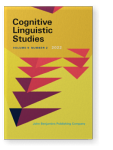Vol. 9:2 (2022) ► pp.223–242
The prototypical approach and the factors affecting the teaching and learning of prepositions
This article is a critical review of the approach based on a polysemy network model applied to teaching prepositions. The analysis brings forth the inherent limitations of this model in explaining less prototypical senses and in leading second language learners to discover a contextualized interpretation of a preposition that may vary subtly from the meaning represented in the model; the model also fails to take conceptual differences between metonym and metaphor into account and assumes that these concepts would be familiar to ESL learners. As will be discussed, methodological modifications could yield more effective results. It is also suggested that a micro-level analysis of each individual sense is required to identify the learning outcomes of the intervention to ascertain that this approach is resourceful in teaching a range of senses in the polysemy network model.
Article outline
- Introduction
- 1.Lack of semantic transparency and concordance
- 2.Schematic distance and prototypical asymmetry
- 3.Differences in metonymic and metaphoric awareness
- 4.Practical implications
- 4.1ESL pedagogy
- 4.1.1The problem of polysemy
- 4.1.2Asymmetrical prototypicality
- 4.1.3Input complexity and uptake
- 4.2Future research
- 4.1ESL pedagogy
- 5.Conclusion
- Acknowledgements
-
References
